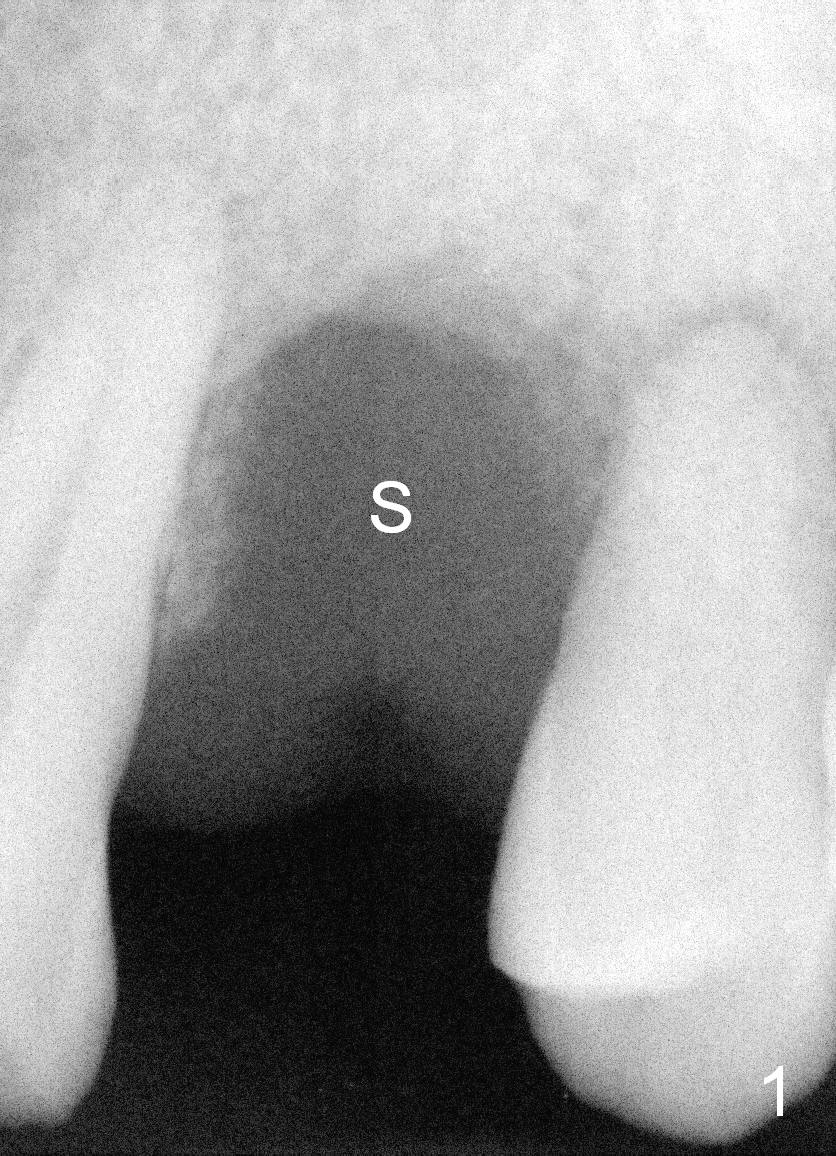
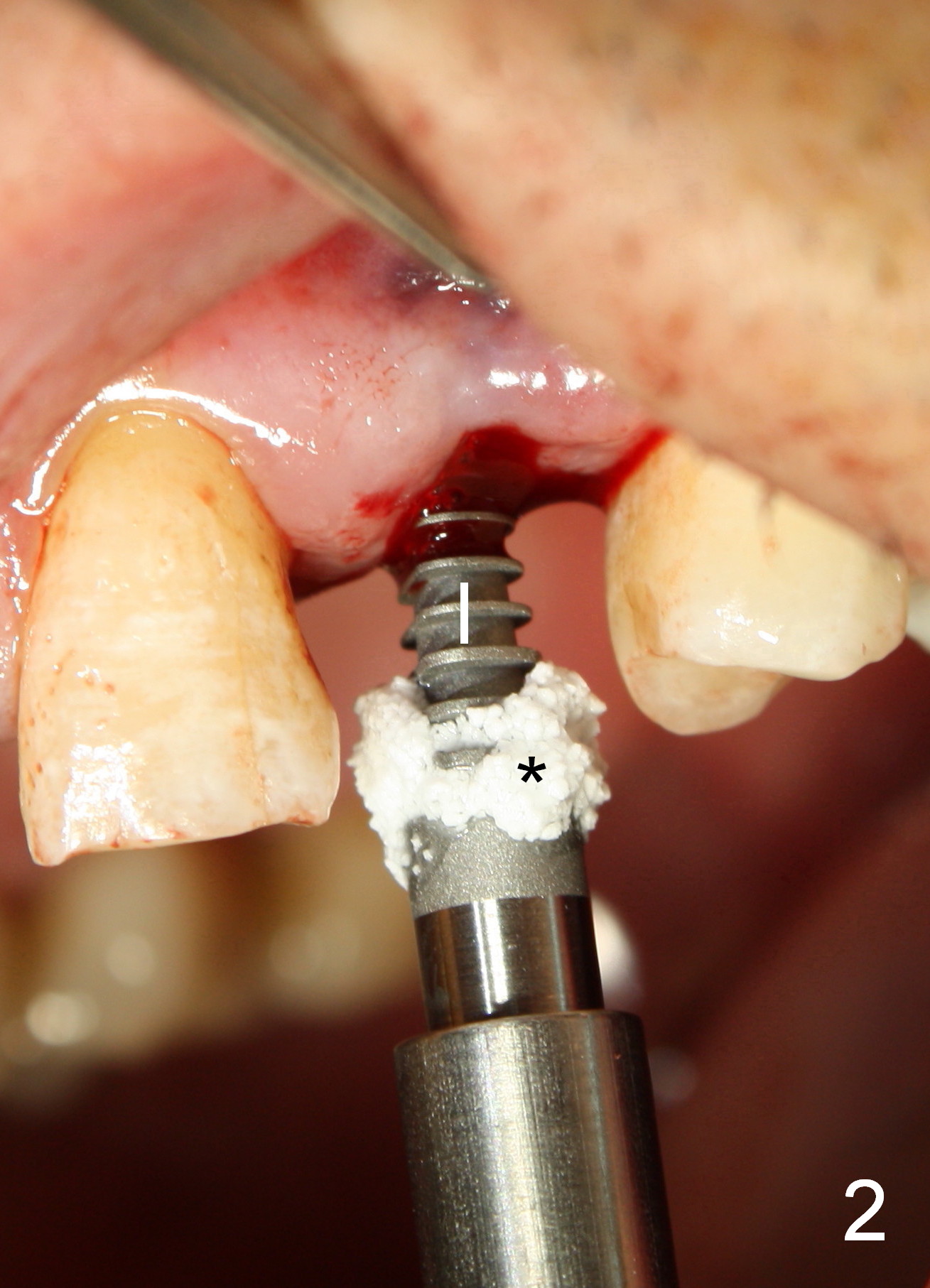
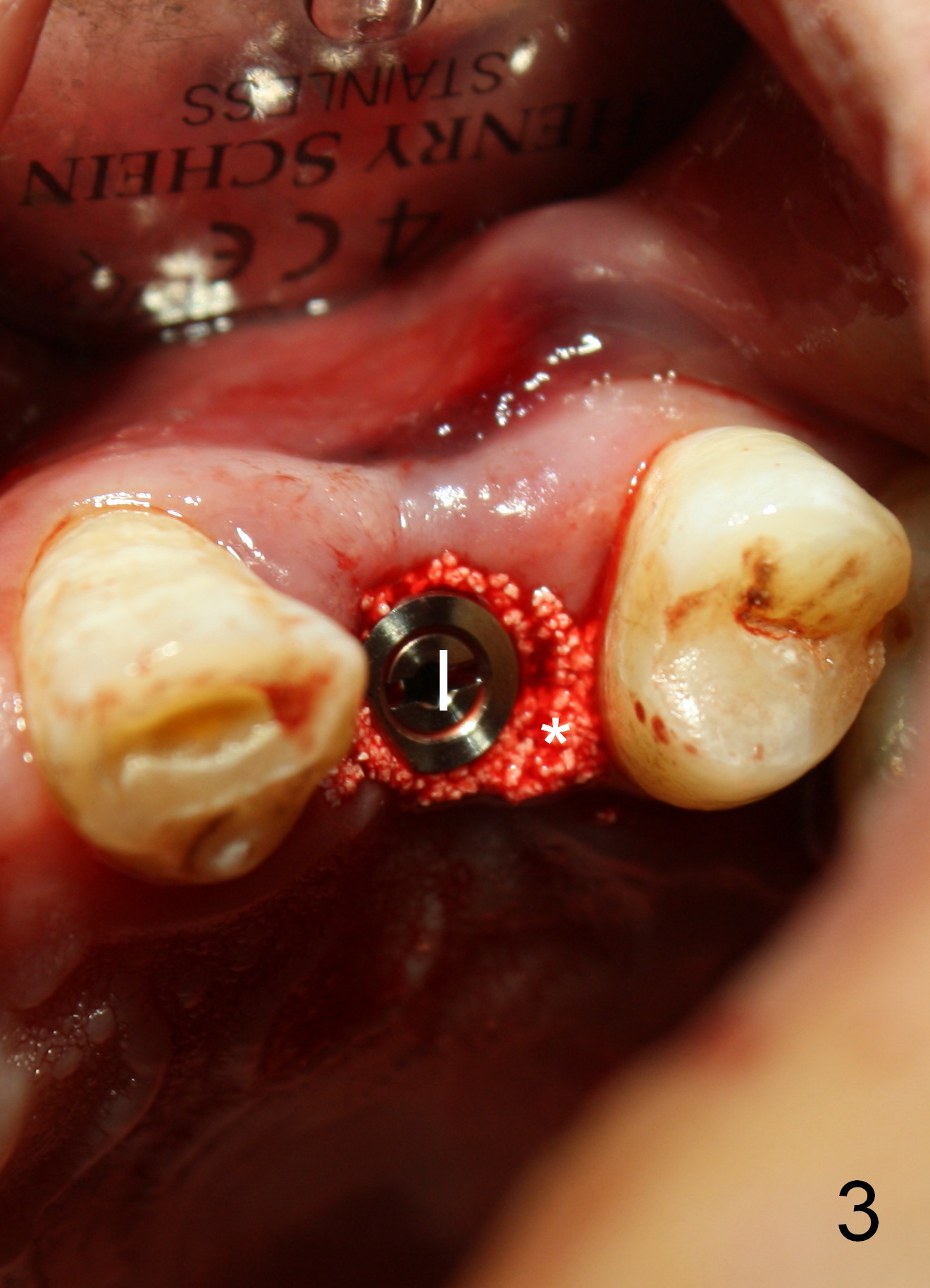
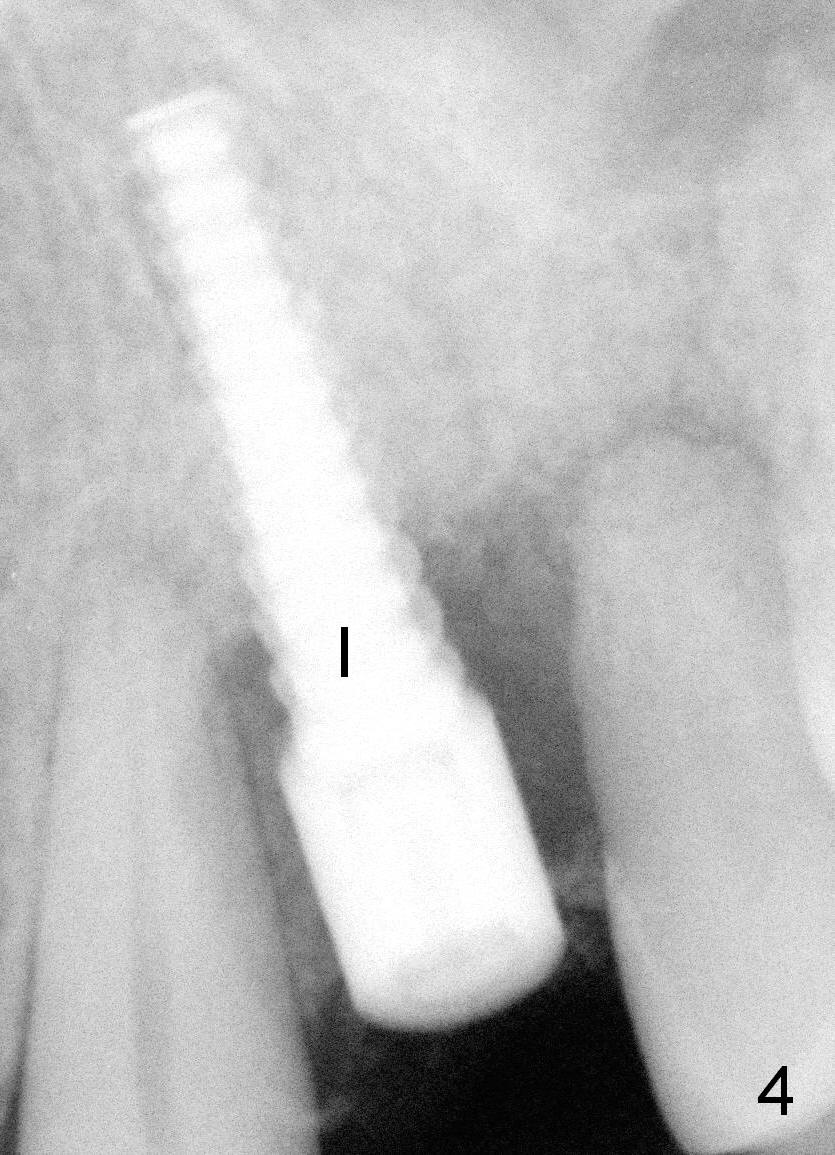
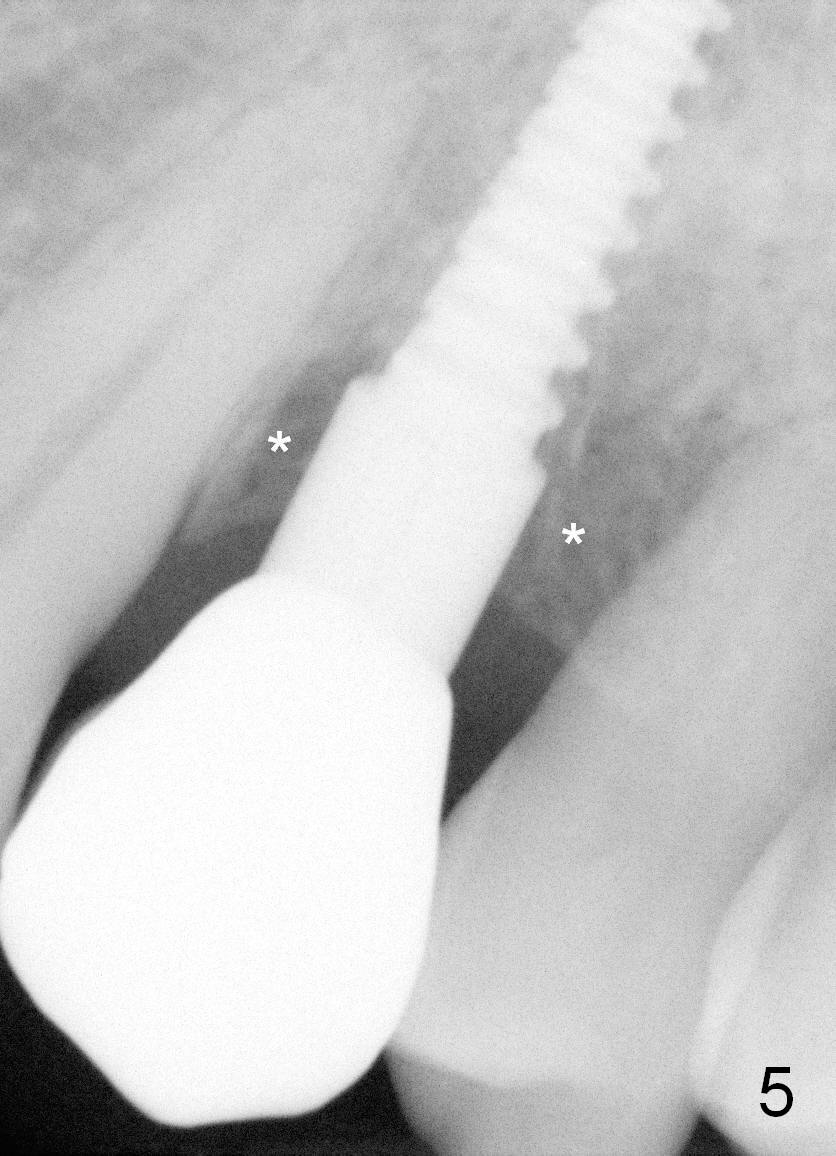
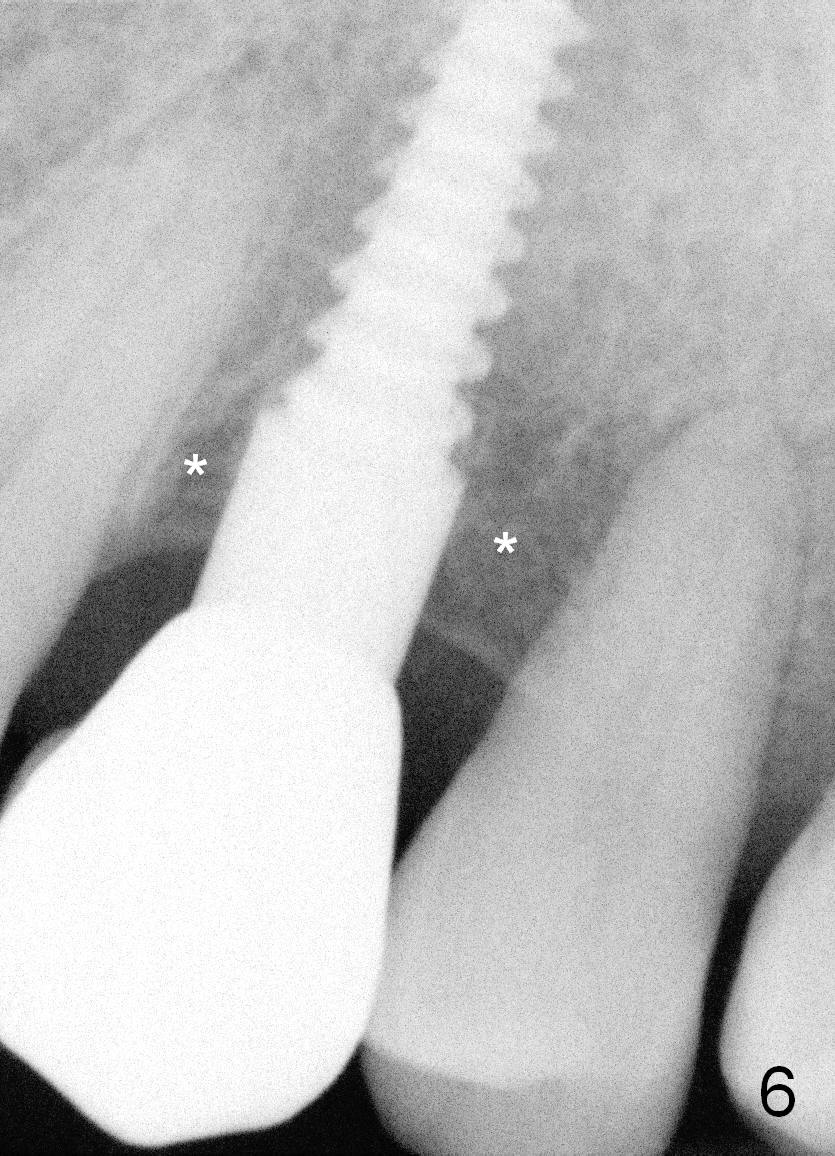
 |
 |
 |
 |
 |
 |
Bone Regrows Around Implant
Gum disease is quite common. In late stage, the affected tooth becomes loose, because of gum recession and bone loss. When the bad tooth is deemed not to be saved, it should be extracted and replaced with a dental implant as soon as possible. This gives us the best chance to regrow bone around the implant.
Mr. Dai, in his late 40s, returns to our office for implant placement 1 month after extraction. There is almost no bone in the bottom of the socket (Fig.1: S ). Bone powder (Fig.2 *) is applied to the bottom of an implant (I) before the latter is placed. Some of bone powder goes into the socket with implant (Fig.3, 4). The patient has enjoyed chewing with the implant in the last two years. When X-ray is taken 1 and 2 years after placement, there is sign of bone regrowth (increase in both amount and density of bone) around the implant (Fig.5,6 *). Chewing (function) promotes bone growth over the nice and clean implant surface, whereas in the late stage of gum disease, the tooth surface is too dirty to be cleaned.
Return to Implant
Xin Wei, DDS, PhD, MS 1st edition 10/18/2015, last revision 10/18/2015